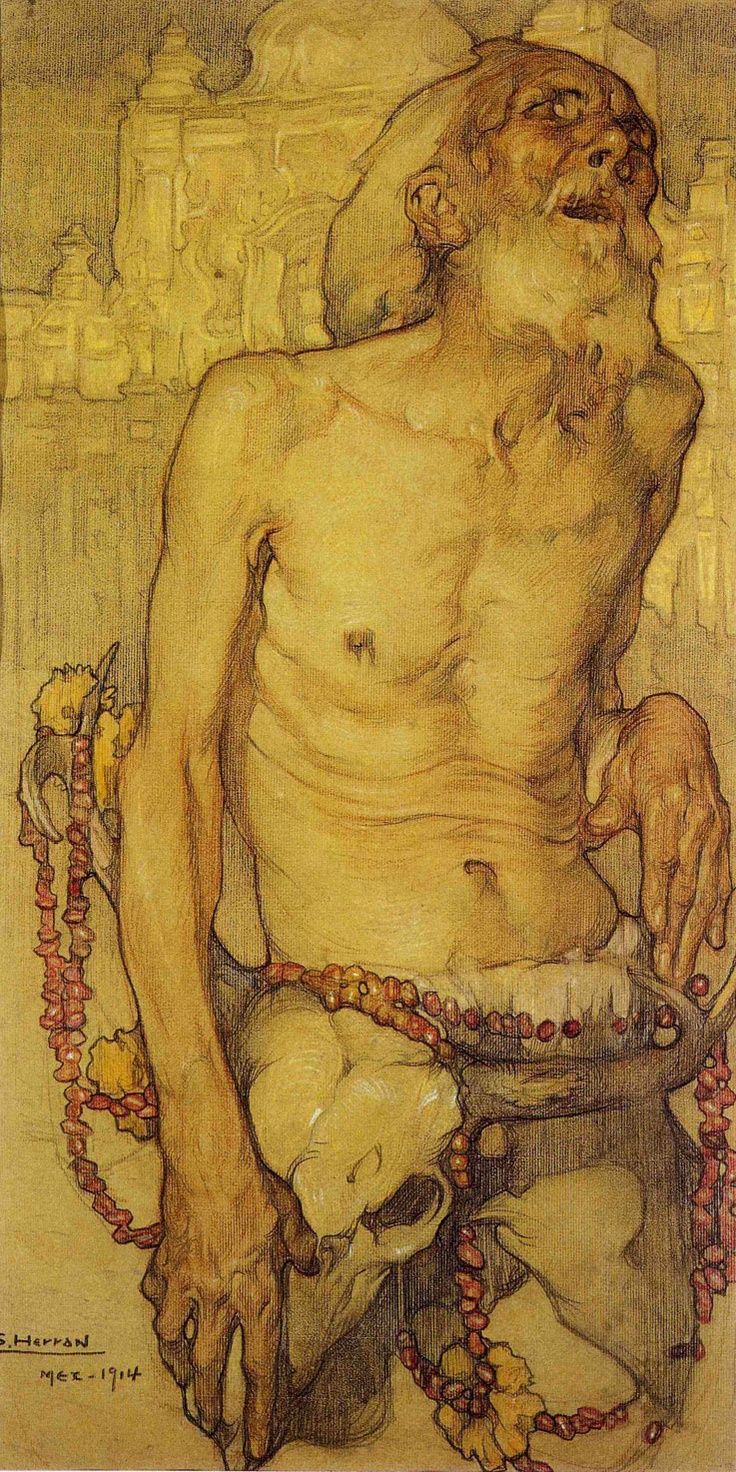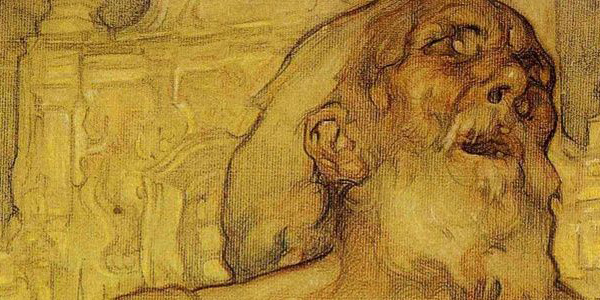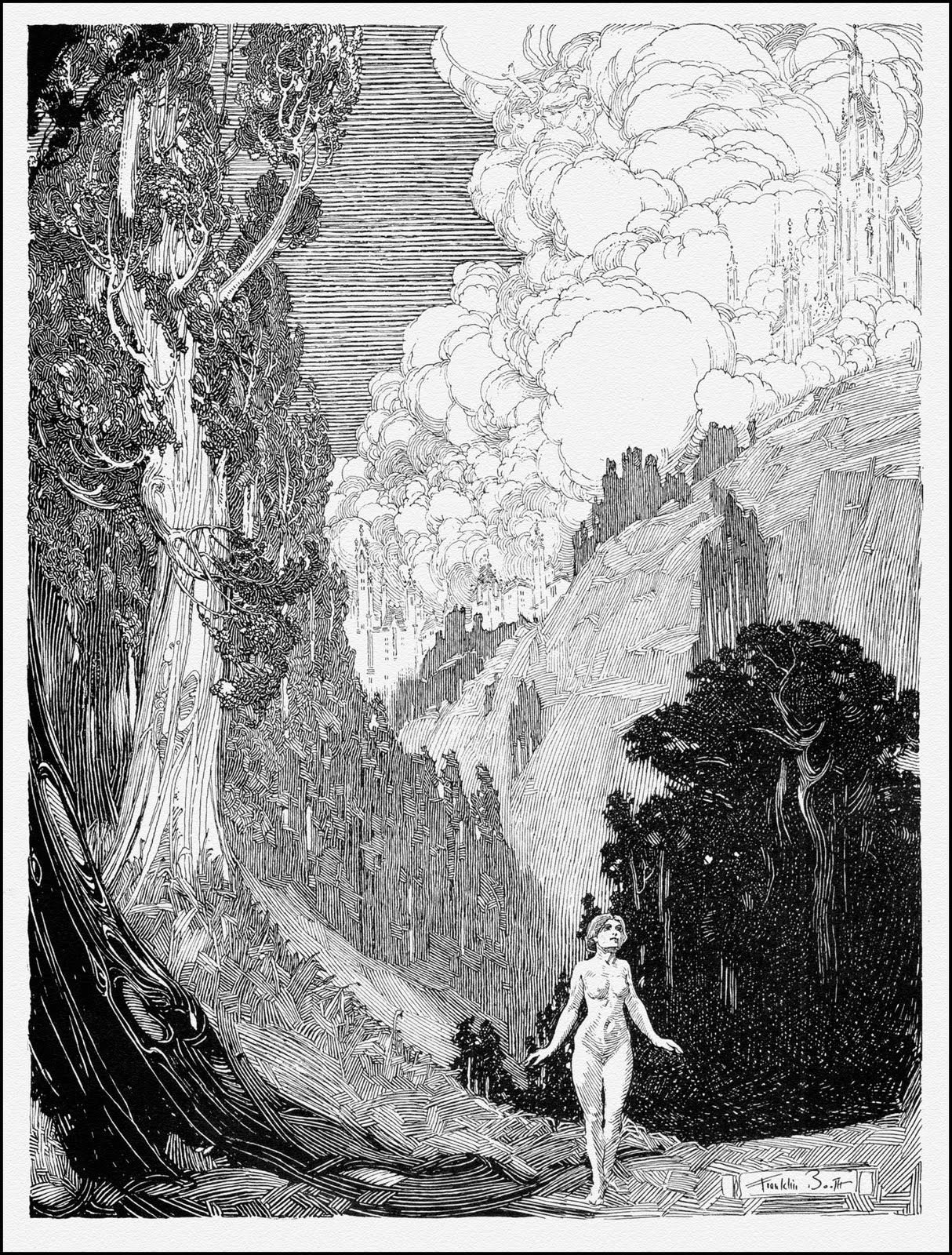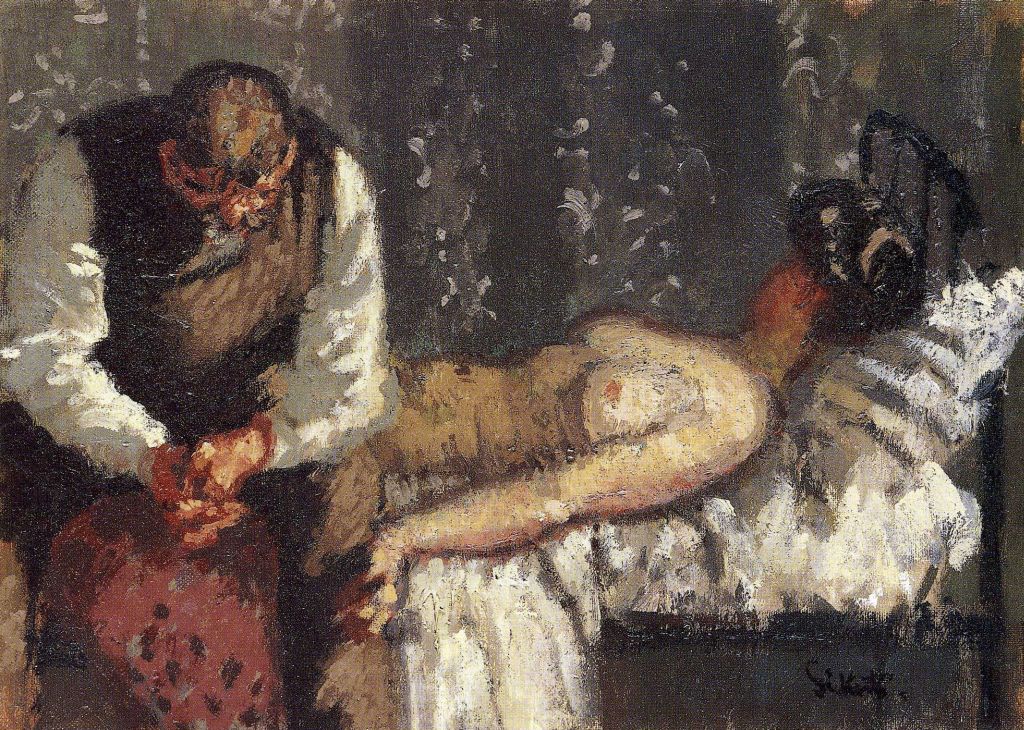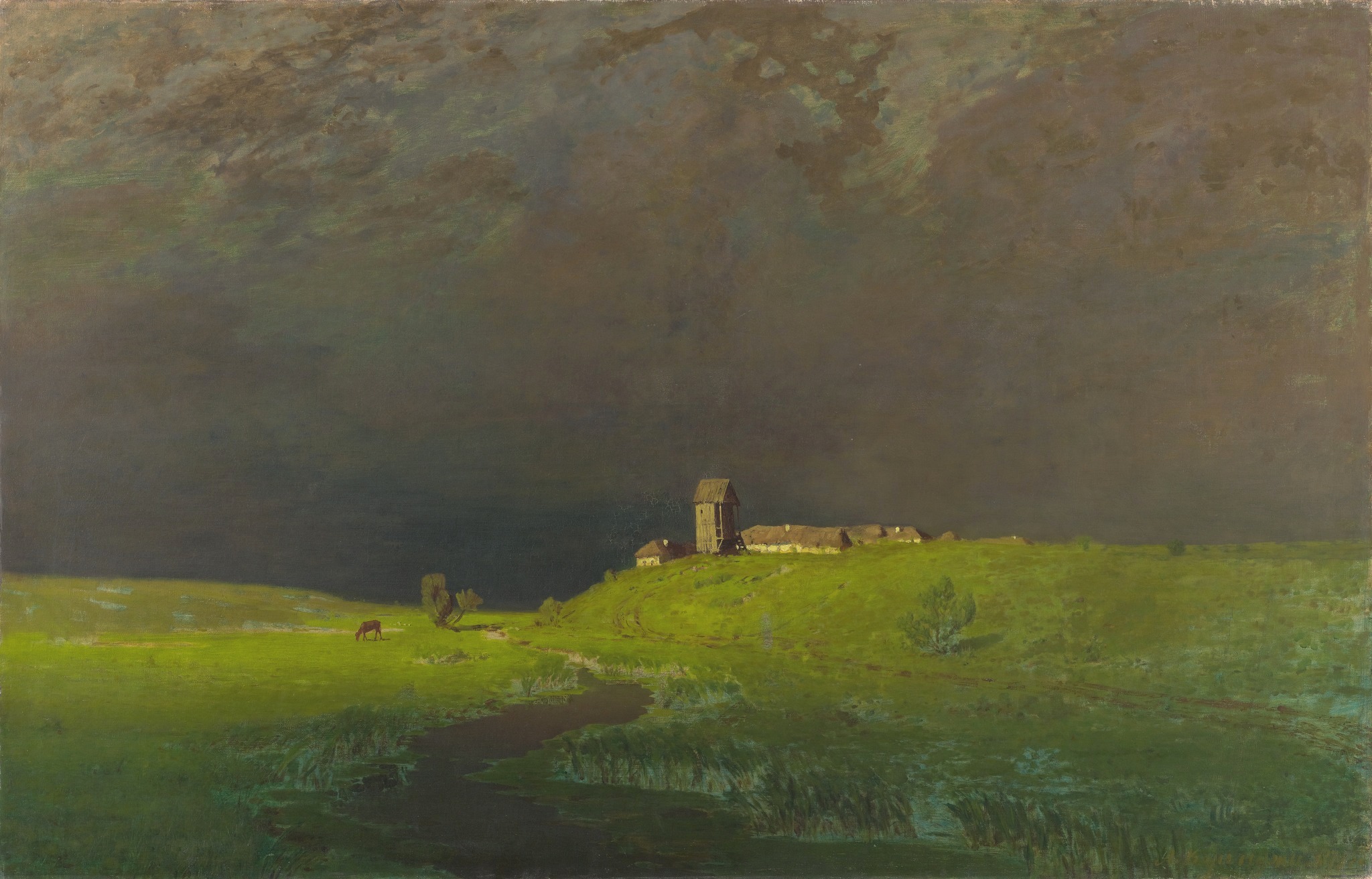I look at a lot of art, which I realize is an immense surprise to the three of you that regularly read these articles. Whether it is art in books, or in galleries, or online, I spend a fair amount of time just looking at whatever art comes my way. Thanks to that, I sometimes end up skimming over entire pages of art, looking for the one piece that might pop out at me.
This is one of those pieces.
In fact, this one didn’t simply pop out for me, it jumped right off the screen and into my world. It is one of those incredible pieces of art that seems so important, so necessary, that I can’t imagine a time without it. When I think of my own works, I often wonder if I can hit such a high note as this one.
It starts with the emotion of the piece. Saturnino Herrán titled it “El Ciego” (The Blind Man), and it is easy enough to take it at face value. Especially in the closeup below, it is clear that the man is blind, and it pushes the viewer towards sympathy.
For me, there’s more to the man, and the entire painting, than the title alone infers. The old man is clearly meant to be the center of our emotions, as Herrán left the background soft and unobtrusive. There are hints of architecture, so we know he’s in a city of some size. But his circumstances are left for us to consider.
Those considerations start with the wonderfully detailed painting of the man. Herrán’s technique is impeccable, his anatomy painted in a lifelike pose. This isn’t photo-realistic, of course, but at the same time it feels like the old man could walk right out of the painting. It is one of the things that I love about art, the idea that even when the brain knows it isn’t real it still expects movement and action.
Herrán’s perfect composition and anatomy counter with the roughness of the piece, challenging the viewer to think about this man in more depth. His hand gripping the skull is highly detailed, as are the beads and the skull itself. The details of the man’s other hand and his head are intricately woven to give a sense of reality to the painting.
Yet, his legs are incomplete, as if Herrán left the rest of the painting to our own imaginations. His unclear, slightly twisted background begs us to use our own thoughts to give this man a story. Is he looking for help? Is he on his way somewhere? Is this the end, and he is finding his way home or into the afterlife?
The balance of sharp details with rough techniques fascinates me, and it sends a message of an artist and a piece of art seemingly torn between worlds. As with other favorite images of mine, “El Ciego” asks that we join in the image, to become part of Herrán’s painted world.
It might be a world of magic, or it may just be one where an old blind man shuffles down the street. It’s time to explore Herrán’s work further and find out just where his world will take us.
References
Read about the unfortunately short life of Herrán
A good Lines & Colors article about Herrán
Saturnino Herrán
El Ciego, or The Blind Man
1914
